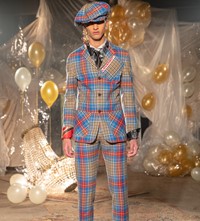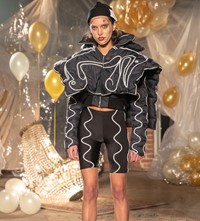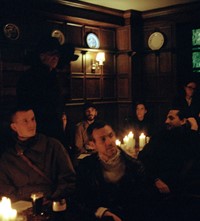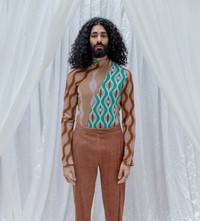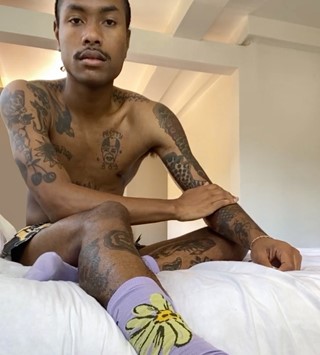Craig, Kiko, two performances and one newcomer – see our highlights from London Fashion Week Men’s A/W19
- TextAnother Man
After three days, over 27 shows and 13 presentations, London Fashion Week Men’s is over. Officially. Here, we provide a rundown of our highlights from the weekend, including our favourite collections and the most important moments.
Craig Green
As we argued last year, Craig Green is a mainstay of the London men’s shows. Just like a trustworthy postman, he always delivers. After a season away (he showed his last collection in Florence), he was back on home turf and definitely on his ‘A’ game. Working with stylist and Dazed creative director Robbie Spencer, the recently-crowned menswear designer of the year riffed on classic pieces – like trench coats and double-breasted jackets – fusing them with religious and martial arts clothing. The plastic or ‘glass men’ looks were an obvious highlight but there were lots of wearable pieces too – Green has a rare gift of being able to create clothes that are at once conceptual and covetable. And, as with any true artist, he’s fluent in the languages of colour, texture, proportion and balance, as this collection exemplified.
Kiko Kostadinov
Once a rising star of the London men’s schedule, it feels like Kiko Kostadinov has now well and truly risen. The Bulgarian-born designer really stepped it up this season, referencing Midnight Lace (1960) and The Ring (1998) for a collection that focussed on outerwear, with a “ladylike, 50s-era silhouette”. His reference to The Ring was particularly noticeable in the black, bejewelled wigs, which adorned (read: completely covered) the models’ faces, flowing in and out of their clothes. As per usual, the cut of Kostadinov’s pieces was outstanding and the whole thing was just done with such class. It was impossible not to be reminded of a Comme show.
Charles Jeffrey
Elsewhere over the weekend, performance took centre stage. At Charles Jeffrey for instance, which was staged at Wapping Power Station, fashion and theatre merged in a show directed by Theo Adams. Dressed in off-kilter ballgowns, tartan suits and fantastical footwear by ROKER, models ran, skipped and jumped down the runway, splashed around in baths filled with paper and slung red feathers from above – creating a scene that paid homage to the nightclubs of the Weimar Republic and the ‘Lost Boys’ of Peter Pan. It was a vision of hedonism, yes, but there was a subtext too: “An opposition to a rumbling sense of global unfairness lies beneath this show,” the designer wrote in his show notes.
John Alexander Skelton
John Alexander Skelton’s show, too, was performative: staged in Ye Olde Cheshire Cheese pub on Fleet Street, a haunt of Charles Dickens among other writers, the presentation took place by candlelight and began with the sound of chanting. Like immersive theatre, the models, who included Skelton’s younger brother Ryan, interacted with the audience, chanting in their faces and even sitting on their laps. Another Man’s fashion editor was slapped (not hard, I’m assured) in the face and had his chair pulled from beneath him. It was this that set the scene for Skelton’s collection which this season took inspiration from “the dwellers of Alsatia – a lawless, and debaucherous yet industrial debtors sanctuary of London unowned by the King existing between the mid-17th to late-18th century.” Another dramatic departure from the traditional runway show.
Rahemur Rahman
This season also saw a new addition to the schedule: British-Bangladeshi Rahemur Rahman, a Central Saint Martins graduate who introduced his namesake label an exploration of South Asian identity. A beautiful and highly personal collection, the clothes took inspiration from photos of his family taken in the 1990s in a marriage of South Asian and Western menswear. And, speaking of marriage, the presentation resembled a traditional South Asian wedding, staged in a Bengali arts and cultural centre where Rahman teaches every week. It was a watershed moment for South Asian representation in fashion – Rahman was even congratulated by actor Riz Ahmed, who said how important his show was for the community.








